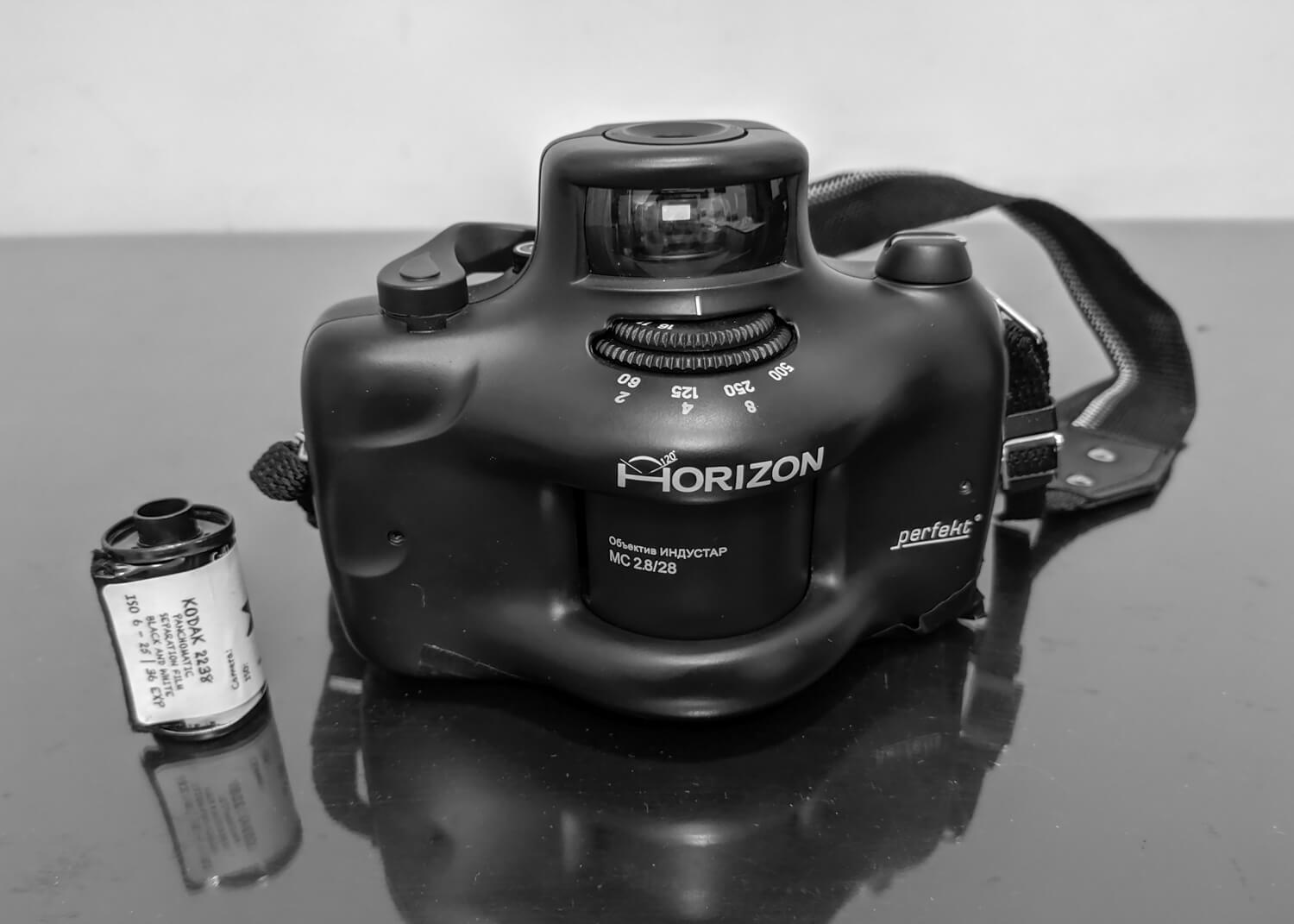This past Easter I planned a trip to Grenoble, a good opportunity to take landscape shots of the French Alps. At the same time, I was been keen to try out an attractive low ISO film that I received in the last Secret Santa (thanks EM); a roll of Kodak Panchromatic Separation Film 2238, a panchromatic film that, developed with HC-110 dilution E for 7 minutes according to the instructions on Alex Luyck’s blog, has a sensitivity of ISO 12 (can be processed also from 6 to 25 ISO).
With nature photography in mind, a good choice was a panoramic format and I chose my loved Horizon Perfekt swing-lens camera. A good poor-man’s panoramic camera substitute for the Widelux. The wide-angle lens has a hyperfocal range from 5.5 metres to infinity for its largest possible aperture of f/2.8. Perfect for mountain photography. The edges – especially the end side of the movement – are not usable because it is mostly blurry (at least mine is) but you get a good resolution large negative of 24x58mm. I have always taken photos with a strong character.

The results of Kodak 2238 are remarkable for a technical film not intended to be used for photography, even though the weather conditions and light hours were not optimal. In the Grenoble valley, there was a haze that reduced the contrast of the background mountains. The noon sun created a contrasting negative on the pictures taken at Lake Annecy. Despite these constraints, Kodak 2238 shows good tonal latitude combined with almost imperceptible grain.
The combination of a low ISO film with a panoramic format has characteristics that come close to those of large format cameras, at least for a poor and lazy landscape photographer as me. A 35mm camera is cheaper and lighter than a large format one but if you look for mostly invisible grain this is a good substitute.





The low ISO often required to shoot below 1/30 of a second, so a tripod is essential for some of the shots which slows down your photography, making you believe that you are adjusting the movements of a large format camera (luckily landscape photography is less prone to require movement and perspective correction).
On the other hand, it is possible to obtain images with great detail without noticeable grain despite the smaller 35mm negative. At the same time, lens aberrations are less critical also when shooting irregular shapes. Surely exchanging the Horizon Perfekt with a classical SLR or rangefinder with a sharp prime lens the results can be improved. This can be tested in future shoots.
~ Alfonso
Submit your 5 Frames… today
Get your own 5 Frames featured by submitting your article using this form or by sending an email via the contact link at the top of the page.
Share your knowledge, story or project
The transfer of knowledge across the film photography community is the heart of EMULSIVE. You can add your support by contributing your thoughts, work, experiences and ideas to inspire the hundreds of thousands of people who read these pages each month. Check out the submission guide here.
If you like what you’re reading you can also help this passion project by heading over to the EMULSIVE Patreon page and contributing as little as a dollar a month. There’s also print and apparel over at Society 6, currently showcasing over two dozen t-shirt designs and over a dozen unique photographs available for purchase.







